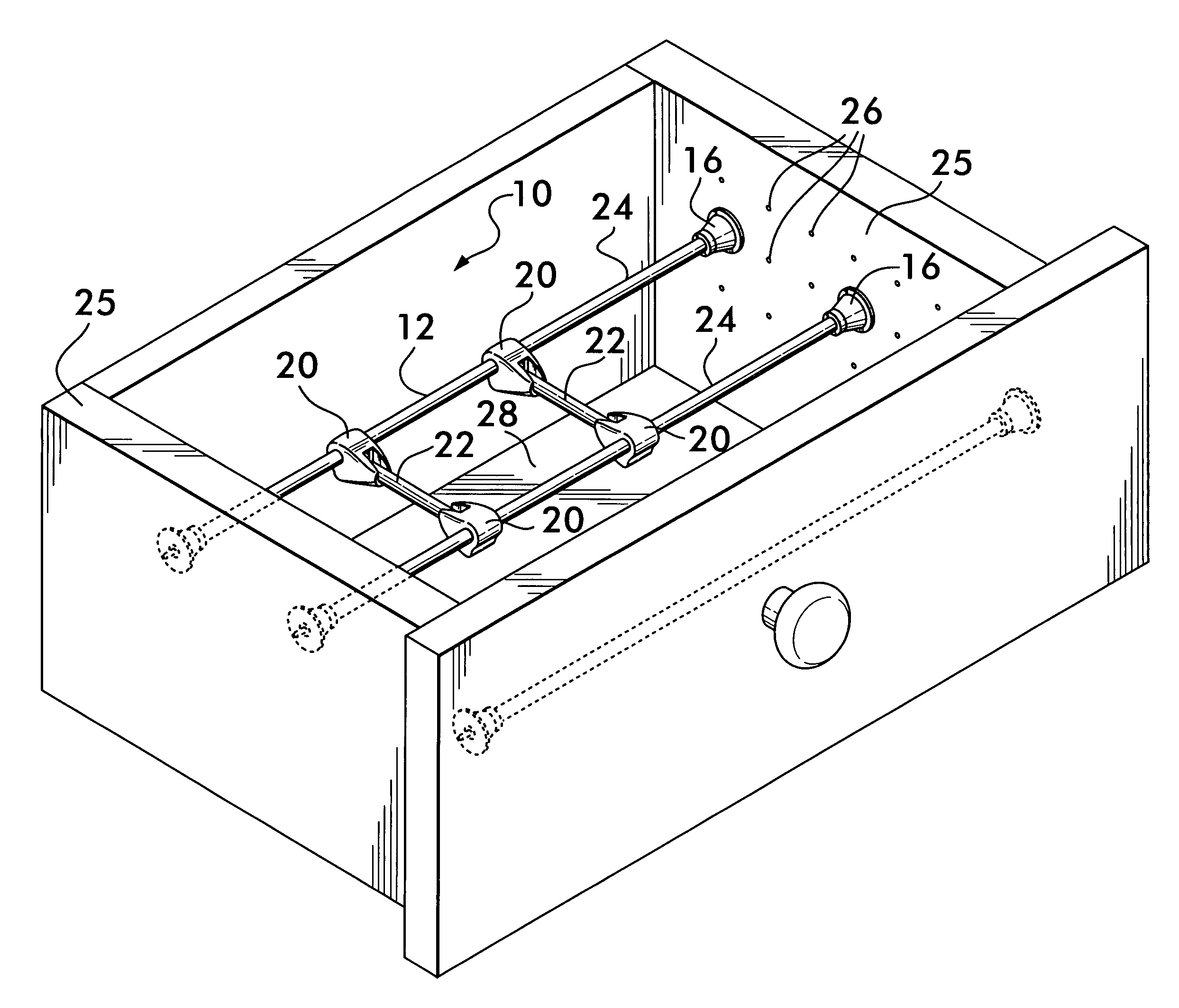Organizing system for drawers and cabinets
a technology for organizing systems and drawers, applied in the field of drawers, cabinet and shelf organizing systems, can solve the problems of inability to provide structure subdivided, often susceptible to need, and inability to adjust partitions, etc., and achieve the effect of convenient cutting to length and exceptional simplicity and economy
- Summary
- Abstract
- Description
- Claims
- Application Information
AI Technical Summary
Benefits of technology
Problems solved by technology
Method used
Image
Examples
Embodiment Construction
[0030]Referring now to the drawings, wherein like part numbers refer to like elements throughout the several views, there is shown in FIGS. 1, 2 and 3 examples of an organizing system for drawers and cabinets 10 in accordance with one preferred embodiment of the present invention. The organizing system 10 includes several main elements including primary support rods 12, such as plated steel or polymeric rods, attachment pins 14 (see, e.g., FIG. 2), and fittings 16, for example, a two-piece compression fitting that includes a male compression fitting portion 16a and a female compression fitting portion 16b. The organizing system 10 may optionally further include sliding rod supports 20 that are adapted to secure one or more secondary horizontal support rods 22. Each of these elements will be described in further detail below.
[0031]FIG. 2 depicts an example of the simplest configuration of the present invention where the system 10 uses one or more main supports 24. In FIG. 2, three ma...
PUM
 Login to View More
Login to View More Abstract
Description
Claims
Application Information
 Login to View More
Login to View More - R&D
- Intellectual Property
- Life Sciences
- Materials
- Tech Scout
- Unparalleled Data Quality
- Higher Quality Content
- 60% Fewer Hallucinations
Browse by: Latest US Patents, China's latest patents, Technical Efficacy Thesaurus, Application Domain, Technology Topic, Popular Technical Reports.
© 2025 PatSnap. All rights reserved.Legal|Privacy policy|Modern Slavery Act Transparency Statement|Sitemap|About US| Contact US: help@patsnap.com



